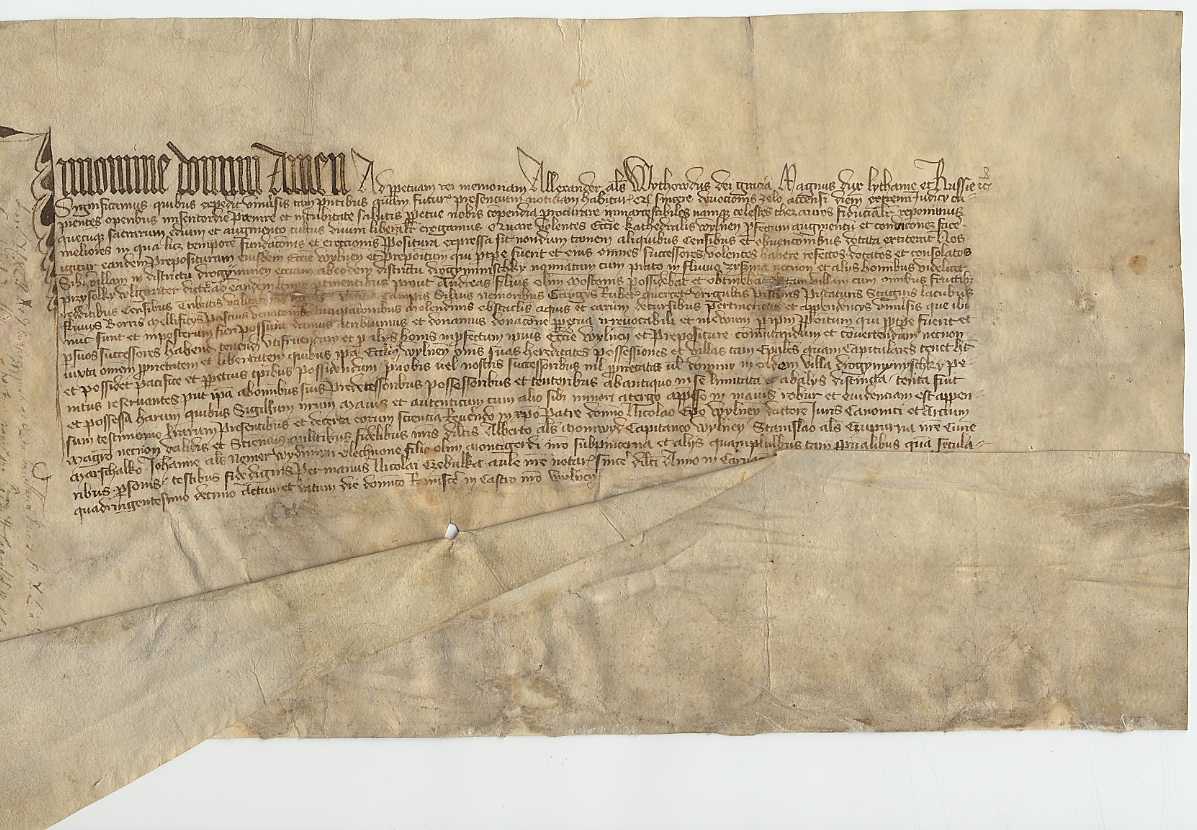|
Ĺ vitrigaila
Švitrigaila (before 1370 – 10 February 1452; sometimes spelled Svidrigiello) was the Grand Duke of Lithuania from 1430 to 1432. He spent most of his life in largely unsuccessful dynastic struggles against his cousins Vytautas and Sigismund Kęstutaitis. Early life and Vitebsk rebellion Švitrigaila was born to Algirdas, Grand Duke of Lithuania, and his second wife Uliana of Tver. His date of birth is unknown, but it is believed that he was the youngest or second youngest son of Algirdas. He first appeared in politics in October 1382 when he witnessed the Treaty of Dubysa between his elder brother Jogaila and the Teutonic Knights. Historians believe that would indicate that at the time Švitrigaila was no younger than 12 which would put his date of birth sometime before 1370. In a complaint submitted to the Council of Florence, Švitrigaila claimed that he and Jogaila were favorite sons of Algirdas. Before his death in 1377, Algirdas transferred his throne to Jogaila but made h ... [...More Info...] [...Related Items...] OR: [Wikipedia] [Google] [Baidu] [Amazon] |
Sigismund Kęstutaitis
Sigismund Kęstutaitis (, ; 136520 March 1440) was Grand Duke of Lithuania from 1432 to 1440. Sigismund was his baptismal name, while his pagan Lithuanian birth name is unknown. He was the son of Grand Duke Kęstutis and his wife Birutė. After the death of Kęstutis, he was a prisoner of Jogaila from 1382 to 1384. Sigismund was baptized in the Catholic rite in 1383. In 1384, he escaped captivity and joined his brother Vytautas, who allied himself with the Teutonic Knights. When Vytautas allied with the Teutonic Knights for the second time to fight Skirgaila, Sigismund was a hostage of the Teutonic Knights, together with his family from 1389 to 1398. He became Duke of Navahrudak (1390–1440), and Starodub from 1406. He participated in the Battles of Battle of Vorskla, Vorskla and the Battle of Grunwald, Grunwald. After the death of Vytautas, he supported his cousin Švitrigaila in his fight against Poland, but later was convinced by nobles to join a conspiracy against him. On ... [...More Info...] [...Related Items...] OR: [Wikipedia] [Google] [Baidu] [Amazon] |
Vytautas
Vytautas the Great (; 27 October 1430) was a ruler of the Grand Duchy of Lithuania. He was also the prince of Grodno (1370–1382), prince of Lutsk (1387–1389), and the postulated king of the Hussites. In modern Lithuania, Vytautas is revered as a Folk hero, national hero and was an important figure in the Lithuanian National Revival, national rebirth in the 19th century. ''Vytautas'' is a popular male given Lithuanian name, name in Lithuania. In commemoration of the 500-year anniversary of his death, Vytautas Magnus University was named after him. Monuments in his honour were built in many towns in independent Lithuania during the History of Lithuania#Independent interwar Lithuania (1918–1940), interwar period from 1918 to 1939. Vytautas knew and spoke the Lithuanian language with his cousin WĹ‚adysĹ‚aw II JagieĹ‚Ĺ‚o, Jogaila. Struggle for power 1377–1384 Vytautas' uncle Algirdas had been Grand Duke of Lithuania until his death in 1377. Algirdas and Vytautas' father KÄ ... [...More Info...] [...Related Items...] OR: [Wikipedia] [Google] [Baidu] [Amazon] |
